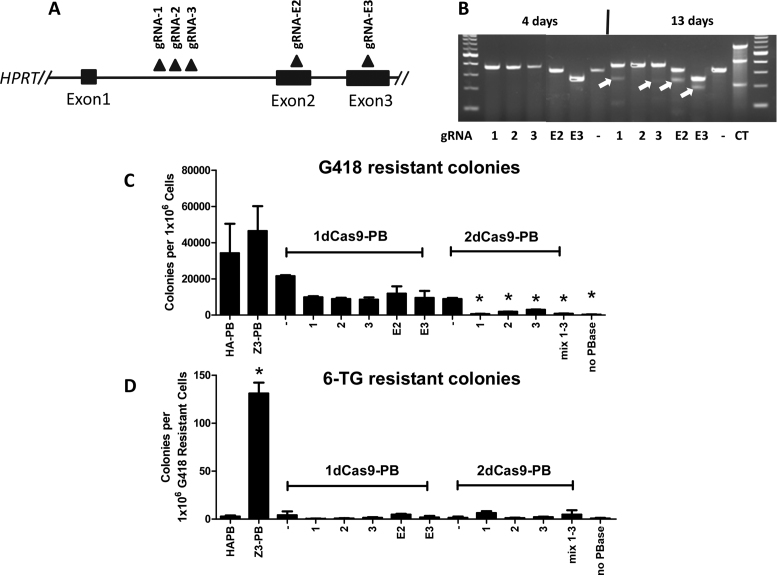Figure 4.
Attempted dCas9-PB mediated gene targeting of HPRT. (A) five different gRNAs were selected to target HPRT and were used supplying the gRNA on a separate (2,4,15) or the same (E2, E3) vector as dCas9-PB. The approximate binding locations are depicted by the black triangles. (B) Surveyor assay using the five gRNAs with catalytically active hSpCas9 and co-transfected with the PB-SB-SA-βGeo plasmid. Cells were selected in G418 for 4 days (left) and 13 days (right) and then assayed for the presence of targeted DNA cleavage using the surveyor assay. (C) G418 resistant colonies produced after co-transfection with the PB-SB-SA-βGeo plasmid with 1dCas9-PB/2dCas9-PB and the varying gRNAs. ANOVA followed by Bonferroni post-test analysis revealed no PBase (no transposase) and 2dCas9-PB to be the conditions significantly different from HA-PB (the positive control) (N = 4, ±SEM), though there was a trend to decreased G418 colony count when using 1dCas9-PB with the gRNAs. (D) Colony number after replating G418 resistant cells into and selecting with 6-TG. ANOVA with Bonferroni post-test revealed Z3-PB to be significantly different from HA-PB (N = 4, ±SEM). None of the gRNAs tested in combination with dCas9-PB resulted in a significant number of 6-TG resistant colonies.

